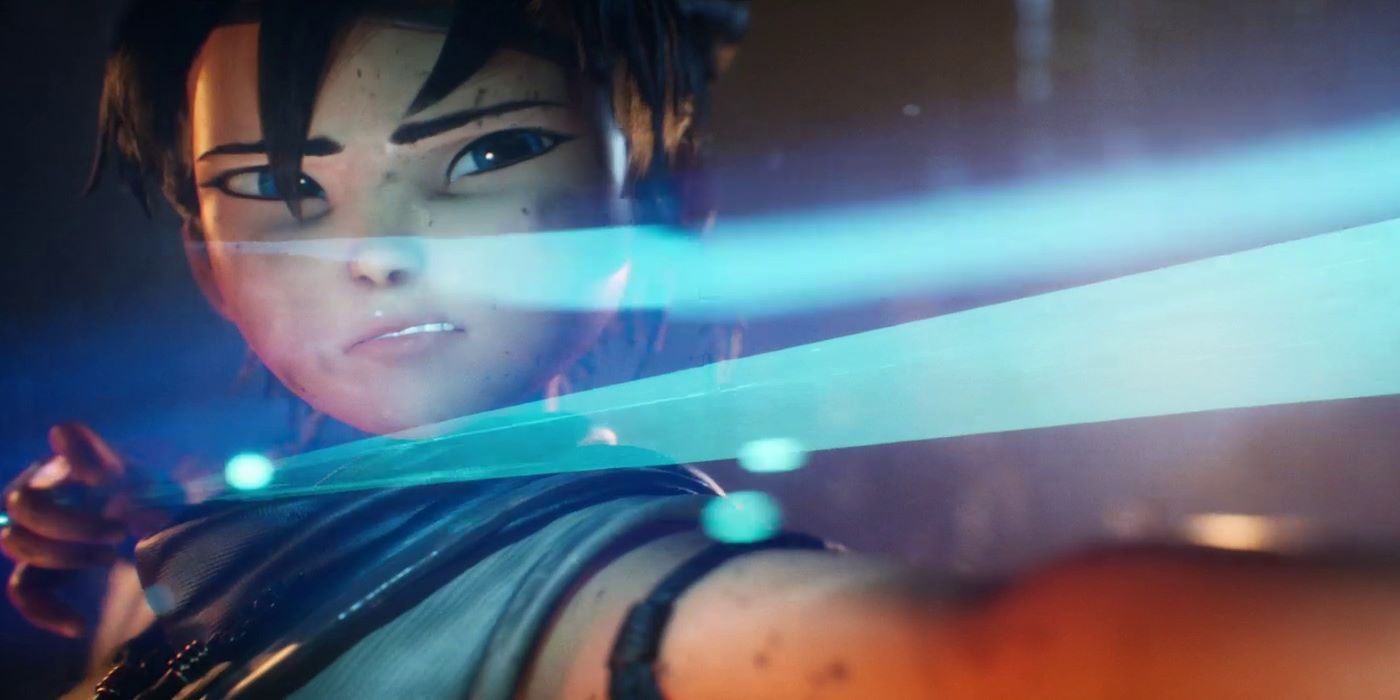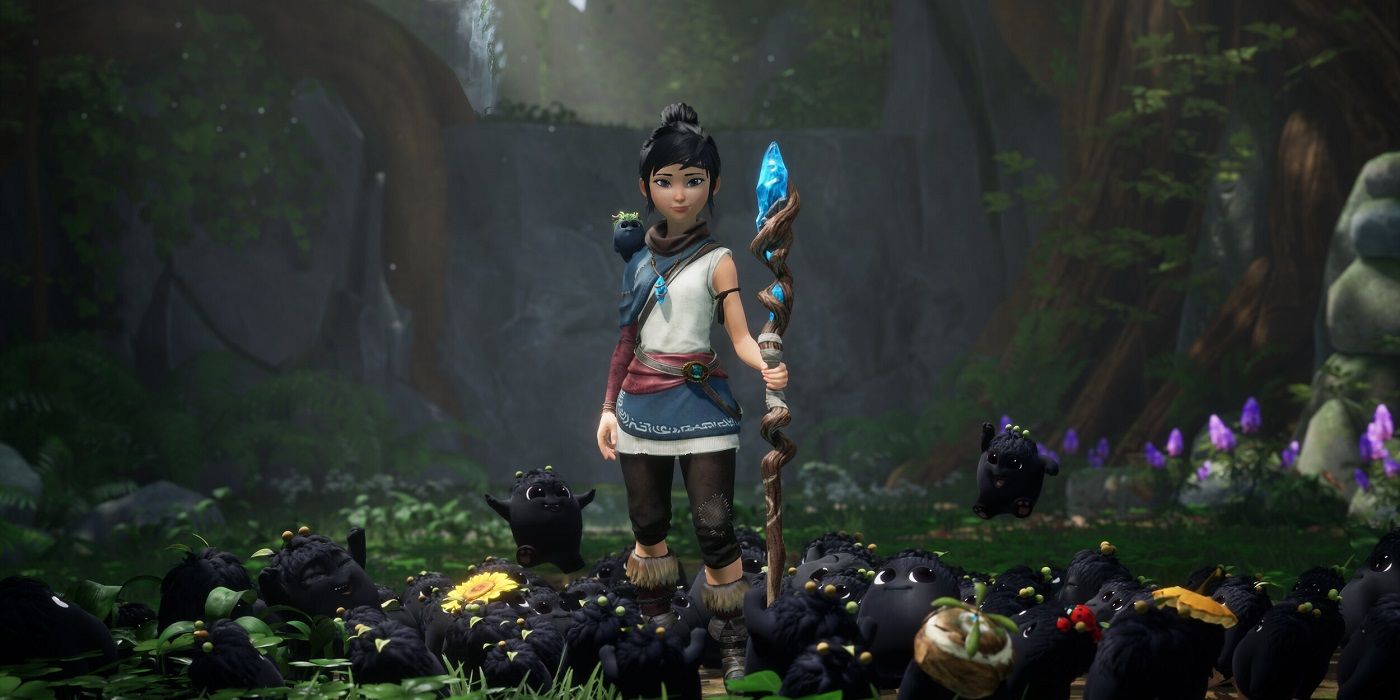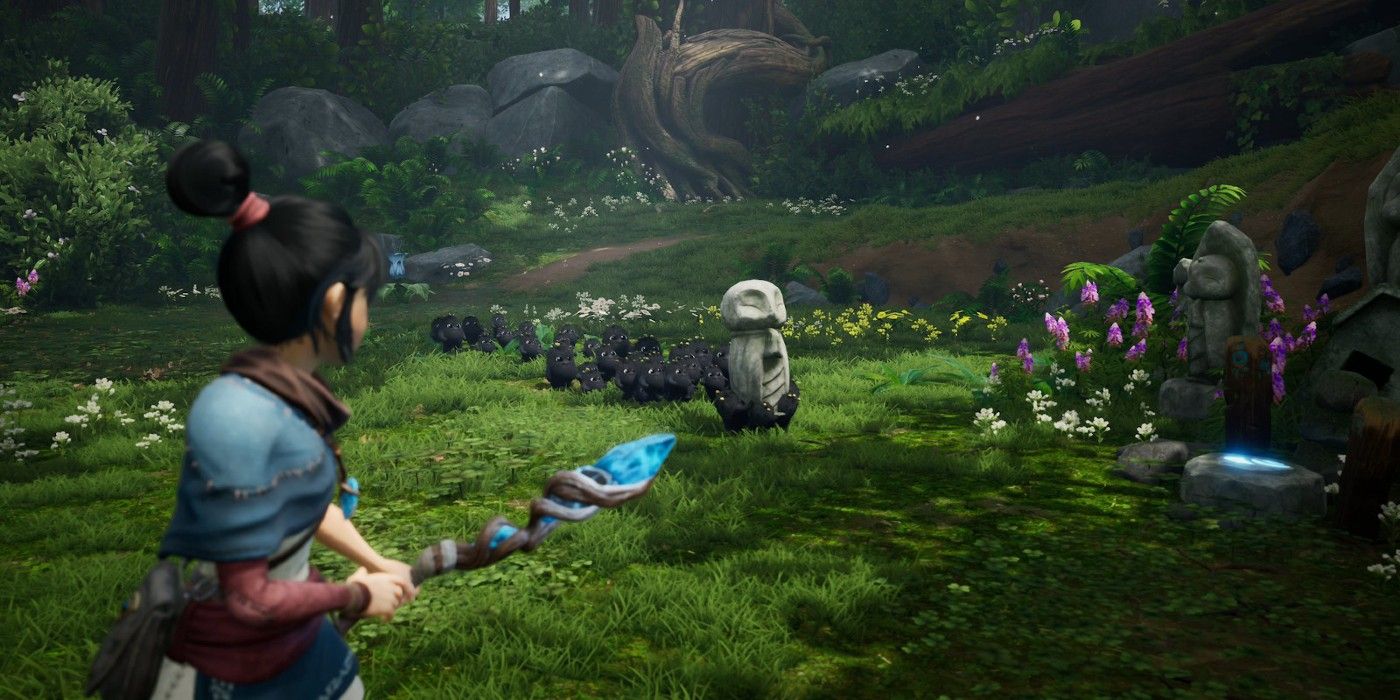Immersion is an interesting beast in game development. Every game looks for its own ways to draw fans into the world of the game, making them develop sympathy for the characters and curiosity about the setting and lore. There are lots of ways to create immersion in a game, with some developers focusing on writing a strong narrative and others pairing the narrative with mechanics that reach beyond the screen. Kena: Bridge of Spirits falls into the latter category. A recent trailer for Kena: Bridge of Spirits showcased how the new indie PS5 title uses the DualSense's adaptive triggers to make the player acutely aware of Kena's actions.
The PS5's unique haptic feedback systems generated a lot of hype when they first got revealed, and so far, they've consistently proven to be a strong selling point for the console. Games like Kena: Bridge of Spirits can use haptic feedback and adaptive triggers to make players feel the simulated environment around their character, offering an extremely impressive level of immersion. The PS5 doesn't bear the first generation of games that sought to make players feel the weight of their actions, though. Ten years ago, The Legend of Zelda: Skyward Sword literally put Link's sword in the hand of players. That game's use of motion controls and Kena's use of adaptive triggers are different tools used for similar aims.
Comparing Kena's Adaptive Triggers to Zelda's Motion Controls
When the PS5's adaptive triggers first came on the scene, they were immediately advertised as a means of simulating things like trigger resistance in shooters. Kena: Bridge of Spirits uses haptic feedback in much the same way. Whenever players use Kena's weak or strong attacks, they'll feel different levels of resistance in the triggers that simulate the weight of the blow. When Kena players use her bow, they'll experience similar resistance of the bowstring through the triggers. Simulation like this represents a pretty revolutionary new way to get players immersed and make players really feel what's happening onscreen.
The Legend of Zelda: Skyward Sword also intended to establish a strong connection between the player's physical actions and what happens in-game. After all, it was published for the Wii, the console largely responsible for establishing motion controls in mainstream game consoles. In Skyward Sword, every swing of the Wiimote directs Link's sword, as well as other weapons like his bow. In fact, most aspects of Skyward Sword incorporated motion controls somehow, from flying on Link's Loftwing to unlocking boss doors in dungeons.
What sets Skyward Sword and Kena: Bridge of Spirits apart is the result of their attempts to immerse the player. Zelda: Skyward Sword has a mixed reputation among fans in large part due to the motion controls, which many felt were unresponsive or unreliable a lot of the time. Kena: Bridge of Spirits has a more stable system in place. Adaptive triggers and haptic feedback don't ask nearly as much precision of a player as the swing of a remote. At the end of the day, the triggers and buttons on the DualSense controllers are still just triggers and buttons. In turn, Kena: Bridge of Spirits is far less at risk of causing confusion and frustration in players with its sensory systems.
Kena: Bridge of Spirits Represents a New Age
Even if Skyward Sword didn't live up to expectations for some players, Nintendo can't be faulted for taking a risk. A game where players directly decide how their character swings a sword will always be a compelling, engaging concept. After all, there was a time that video game fans never would have dreamed of being so closely connected to the actions of their favorite video game characters. Skyward Sword wasn't perfect, but it was an innovative step that did its best to really make Zelda fans feel like they were a part of Link's adventure.
Kena: Bridge of Spirits and other star titles on the PS5 show how video game technology is taking a big step similar to that of Nintendo's investment in motion controls. Controllers now have multiple ways to make players feel the video game world around them without asking them to swing their arms around to get that experience. Kena: Bridge of Spirits continues Sony's venture into adaptive trigger and haptic feedback, with the tech quickly setting a new industry standard. While these features are still fresh, it is eternally exciting to watch the game industry develop creative new ways to make video games feel real.
Kena: Bridge of Spirits launches on August 24, 2021 for PC, PS4, and PS5.



